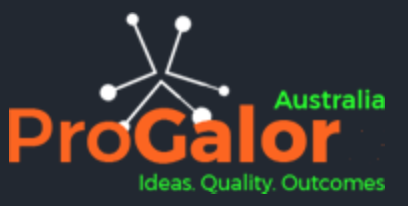
Quality Testing Services
In order for any business to succeed they need to have the right planning, the right strategy, and the right execution of these things. We helps its clients expand and grow by providing them all three. We know how important it is to have the right plan, if your plan is wrong then every step you take will be in the wrong direction as well. This moves companies away from their objective instead of towards it. We study our clients deeply before suggesting any plan, because we have to ensure that we have all the variables in check.
Normally, we have heard from clients about loosing trust over IT Services because of missing quality of the final product. There is more work involved to make sure that the requirements met and quality been achieved. Our testing framework embeds processes that are required to produce quality product away from typical test case based common black hole testing.
ProGalor would provide a window of success for continuous improvement and deliver quality tested product.
We help companies assess their skills and choose a new direction which utilizes the talents of the team and resources most productively.
Quality Assurance and Consulting
Providing guidance, advice, and expertise in designing, implementing, and optimising software testing processes and strategies within an organisation. It encompasses various aspects aimed at improving the quality, reliability, and efficiency of software products:
- Assessment and Analysis: ProGalor assesses the current testing practices, methodologies, tools, and infrastructure within your organisation to identify strengths, weaknesses, gaps, and areas for improvement.
- Strategy Development: Based on the assessment, ProGalor team collaborates with stakeholders to create a comprehensive testing strategy aligned with business objectives. This includes defining testing objectives, identifying key metrics for evaluation, and establishing a roadmap for implementation.
- Process Improvement: ProGalor assists in optimising testing processes by recommending best practices, automation techniques, and efficient workflows to streamline testing activities. This involves incorporating agile methodologies, continuous integration/continuous deployment (CI/CD) practices, and DevOps principles into the testing process.
- Tool Selection and Implementation: Advising on selecting appropriate testing tools and technologies that suit the organisation’s needs, budget, and goals. ProGalor helps in the implementation and integration of these tools into the existing infrastructure.
- Test Automation: Promoting the adoption of test automation frameworks and scripting languages to increase the efficiency and coverage of testing. This involves identifying test scenarios suitable for automation and developing scripts to execute these tests.
- Training and Skill Development: Providing training programs and workshops to upskill the testing team on the latest methodologies, tools, and industry best practices.
- Risk Management: Helping organisations identify potential risks associated with software testing and devising strategies to mitigate these risks. This involves prioritising testing efforts based on critical areas and potential impact on the software.
- Metrics and Reporting: Establishing metrics to measure the effectiveness of testing efforts, such as defect density, test coverage, and mean time to detect/resolve issues. ProGalor create reports and dashboards to track these metrics and provide insights to stakeholders.
- Continuous Improvement: Encouraging a culture of continuous improvement by conducting regular reviews, gathering feedback, and refining the testing strategy and processes based on evolving requirements and industry advancements.
ProGalor team will be overseeing and guiding the entire testing process within your organisation to ensure the delivery of high-quality software products.
- Test Planning and Execution: Developing test plans detailing the scope, objectives, resources, and timelines for testing. Consultants oversee the execution of these plans, ensuring that testing activities are carried out according to established strategies and standards.
- Tool Selection and Implementation: Advising on the selection, implementation, and integration of testing tools and technologies suitable for the organisation’s needs. This includes test management tools, automation frameworks, defect tracking systems, etc.
- Quality Assurance Processes: Establishing and implementing quality assurance processes to maintain high standards throughout the software development lifecycle. This involves defining quality gates, reviews, and checkpoints to ensure that quality is maintained at every stage.
- Risk Management: Identifying potential risks associated with testing and implementing strategies to mitigate these risks. ProGalor prioritises testing efforts based on risk analysis to focus on critical areas that may impact software quality.
- Metrics and Reporting: Defining key performance indicators (KPIs) and metrics to measure the effectiveness and progress of testing activities. ProGalor team creates reports and dashboards to provide insights into the testing process and identify areas for improvement.
- Test Automation and Optimisation: Promoting test automation where applicable to improve efficiency and coverage. ProGalor team will identify areas suitable for automation, design test scripts, and optimise automation frameworks to enhance the testing process.
Reviewing test processes is a fundamental aspect of improving the efficiency, effectiveness, and quality of software testing within an organisation:
- Understand Current Processes: Begin by comprehensively understanding the existing test processes in place. This involves gathering documentation, interviewing team members, and observing the workflow to identify how testing is conducted, what methodologies are used, and what tools are employed.
- Define Review Objectives: Clearly outline the goals and objectives of the test process review. Determine whether the focus is on improving efficiency, increasing test coverage, reducing defects, enhancing automation, or achieving other specific outcomes.
- Assess Process Effectiveness: Evaluate the effectiveness of the current testing processes against industry best practices and standards. This assessment should cover areas such as test planning, test case design, execution, defect management, reporting, and overall quality assurance practices.
- Identify Pain Points and Gaps: Analyse the identified processes to pinpoint areas of inefficiency, bottlenecks, inconsistencies, or gaps in the testing workflow. These might include manual tasks that could be automated, lack of clear communication channels, inadequate test coverage, or insufficient resources.
- Collect Metrics and Data: Gather quantitative and qualitative data related to testing processes. Metrics such as defect density, test coverage, test execution time, and feedback from stakeholders can provide insights into the effectiveness and efficiency of the processes.
- Solicit Feedback: Engage stakeholders, including testers, developers, project managers, and business representatives, to gather feedback on their experiences with the current testing processes. This feedback can reveal user pain points and areas for improvement.
- Benchmarking and Comparison: Compare the current processes with industry benchmarks or standards to identify gaps and areas for improvement. Benchmarking against similar organisations or industry best practices can provide valuable insights.
- Propose Recommendations: Based on the findings from the review, develop a set of actionable recommendations to address the identified pain points and improve the overall test processes. These recommendations should be specific, measurable, achievable, relevant, and time-bound (SMART).
- Implementation Plan: ProGalor team will create a detailed plan for implementing the recommended changes. This plan should include timelines, resource allocation, training needs, tool enhancements or acquisitions, and a phased approach for process improvement.
- Continuous Monitoring and Improvement: ProGalor team will implement the proposed changes and continuously monitor the impact on testing processes. Regularly review and refine the processes based on feedback, metrics, and evolving business needs to ensure continuous improvement.
Improving its efficiency, effectiveness, and overall quality to ensure better software outcomes:
- Evaluate Current Process:
- Conduct a thorough assessment of the existing testing process. Understand workflows, methodologies, tools, and resources used.
- Identify bottlenecks, inefficiencies, and areas that require improvement. This could involve analyzing metrics, gathering feedback from team members, and assessing the effectiveness of current practices.
- Set Clear Objectives:
- Define clear objectives for optimization, such as reducing test cycle time, enhancing test coverage, improving defect detection rates, or increasing the efficiency of resources.
- Automation Strategy:
- Identify test cases and scenarios suitable for automation. Implement and expand test automation to streamline repetitive and time-consuming tasks.
- Evaluate and select appropriate automation tools and frameworks that align with the project’s requirements.
- Prioritise Testing Efforts:
- Prioritise testing based on risk assessment. Focus on critical areas of the software that could have the most significant impact on quality or user experience.
- Implement risk-based testing to allocate resources effectively and maximize test coverage in high-risk areas.
- Adopt Agile and DevOps Practices:
- Incorporate agile methodologies and DevOps practices into the testing process. This includes iterative testing, continuous integration, and continuous delivery to enable faster feedback loops and quicker response to changes.
- Enhance Test Case Management:
- Review and optimise test case management practices. Ensure clarity, reusability, and maintainability of test cases. Regularly update test cases to reflect changes in requirements.
Our Managed Testing Services
We also ensure that the whole team is included in the process and that no one is left out during the turnaround. The most crucial part is ensuring some degree of financial stability during the turnaround.
This is the most worrying part for most clients going through or needing a turnaround; it means that incoming cash flows will change completely. We help ease these issues through fantastic financial projections and a realistic view of what can be accomplished.
Creating a list of potential qualified prospects for your service or product can be daunting when you’re beginning your business. However, this needs to be considered as a follow up on your Target Market Analysis so you can hit the ground running.
BENEFITS to our Clients
There are many proven strong sides of our services that companies can benefit from. Here are just some of them:
- Cost Advantages
- Increased Efficiency & Innovation
- Access to Skilled Resources & Staffing Flexibility
- Internal Staff Education and Technology Certifications
- Focus on Core Activities
- Operational Costs Control
- Time Zone Advantages
- Continuity and Risk Management
- Project Management Simplification
- Work Relationships Simplification (SLAs, SLOs)
